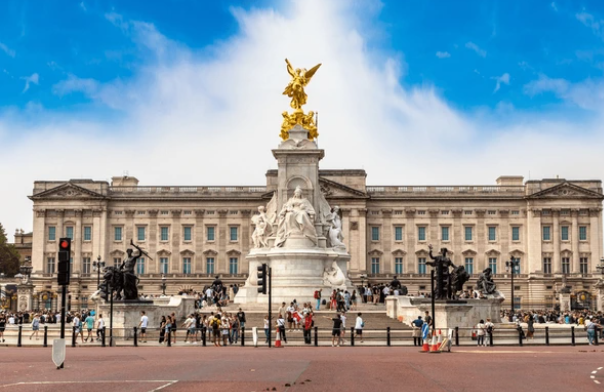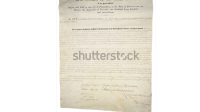Introduction: The Beginning of the Victorian Age
Queen Victoria Becomes Monarch – The accession of Queen Victoria to the British throne on June 20, 1837, marked the beginning of a remarkable era in British history known as the Victorian Age. Queen Victoria, who was just 18 years old at the time, would go on to become one of the longest-reigning monarchs in British history, ruling for over 63 years. Her reign saw profound changes in British society, politics, and the empire, and it was characterized by significant industrial, cultural, and scientific advancements.
Victoria’s reign came at a time of great transformation. The Industrial Revolution was in full swing, and Britain was rapidly becoming the world’s leading economic and imperial power. As queen, Victoria became a symbol of stability and continuity in a rapidly changing world. Her influence extended far beyond the borders of Britain, shaping the course of global history and leaving a legacy that endures to this day.
Read Also : Execution of Charles I (1649): The End of the English Monarchy’s Absolute Power
The Path to the Throne: Queen Victoria’s Early Life and Ascension
Victoria’s journey to the throne was shaped by her unique family circumstances and the complex dynamics of the British royal family in the early 19th century.
The Early Life of Queen Victoria: From Kensington Palace to the Throne
Victoria was born on May 24, 1819, at Kensington Palace in London. She was the only child of Prince Edward, Duke of Kent, and Princess Victoria of Saxe-Coburg-Saalfeld. Her father, the fourth son of King George III, died when Victoria was just eight months old, leaving her to be raised by her mother in a sheltered and strict environment.
Victoria’s early life was heavily influenced by her mother and her mother’s close adviser, Sir John Conroy. The young princess was kept largely isolated from the outside world, and her upbringing was marked by a strict regimen known as the “Kensington System.” This system was designed to keep Victoria under her mother’s control and to prepare her for her future role as queen. Despite the constraints of her upbringing, Victoria developed a strong sense of duty and determination, qualities that would serve her well when she became queen.
The Complex Succession: How Queen Victoria Became the Heir to the Throne
Victoria became heir to the British throne as a result of a series of unexpected deaths and political developments within the royal family. By the time of her birth, her grandfather, King George III, had been king for nearly 60 years, but his later years were marred by bouts of insanity, leaving his eldest son, George IV, to serve as regent and later king.
George IV’s only legitimate child, Princess Charlotte, died in childbirth in 1817, leaving the line of succession in question. The subsequent deaths of Victoria’s uncles, including King William IV, who died in 1837 without surviving legitimate children, made Victoria the next in line for the throne. At just 18 years old, Victoria ascended to the throne, becoming Queen of the United Kingdom of Great Britain and Ireland.
The Coronation of Queen Victoria: A Symbolic Beginning
Victoria’s coronation on June 28, 1838, was a grand and symbolic event that marked the official start of her reign. Held at Westminster Abbey, the ceremony was attended by thousands of dignitaries and members of the public. The coronation was an important moment in British history, symbolizing not only the beginning of a new reign but also the continuity and stability of the British monarchy.
The coronation was a carefully orchestrated event that showcased the splendor and tradition of the British monarchy. Victoria, dressed in regal robes and adorned with the crown jewels, took her place at the center of the ceremony. The event was widely celebrated across the country, with festivities and public gatherings held in towns and cities throughout Britain. The coronation of Queen Victoria set the tone for a reign that would be defined by both grandeur and a deep sense of duty.
The Challenges of a Young Queen: Early Reign and Political Struggles
Victoria’s early years as queen were marked by significant challenges as she navigated the complexities of her new role and the shifting political landscape of Britain.
The Political Landscape: Queen Victoria’s Relationship with Her Prime Ministers
One of the key challenges Victoria faced in her early reign was managing her relationship with the various prime ministers who served during her time as queen. The British monarchy had undergone significant changes in the years leading up to Victoria’s accession, with the role of the monarch becoming increasingly constitutional rather than absolute. This meant that Victoria had to work closely with her prime ministers, who were the real political power in the country.
Victoria’s first prime minister, Lord Melbourne, played a crucial role in guiding the young queen through the early years of her reign. Melbourne, a Whig politician, became a close confidant and mentor to Victoria, helping her navigate the complex world of British politics. However, the relationship between the crown and the government was not always smooth. Victoria’s strong opinions and preferences sometimes clashed with those of her ministers, leading to political tensions.
The relationship between Victoria and her prime ministers would continue to evolve throughout her reign. Notably, her interactions with Prime Minister Benjamin Disraeli and his rival William Gladstone were marked by both cooperation and conflict. Disraeli, a Conservative, famously charmed the queen and won her favor, while Gladstone, a Liberal, had a more challenging relationship with Victoria. These dynamics played a significant role in shaping the political landscape of the Victorian era.
The Bedchamber Crisis of 1839: A Test of Victoria’s Authority
Queen Victoria Becomes Monarch – One of the earliest and most significant political crises of Victoria’s reign was the Bedchamber Crisis of 1839. This crisis arose when Sir Robert Peel, a Conservative leader, was invited to form a government after the resignation of Lord Melbourne. Peel requested that Victoria replace several of her ladies-in-waiting, who were closely associated with the Whig Party, with women who supported the Conservative Party.
Victoria refused Peel’s request, citing her desire to maintain her personal household without political interference. Peel, feeling unable to form a government under these conditions, declined the invitation to become prime minister, and Melbourne was reinstated. This crisis was a significant moment in Victoria’s reign, as it highlighted the delicate balance of power between the monarchy and the government.
Queen Victoria Becomes Monarch – The Bedchamber Crisis also underscored Victoria’s determination to assert her authority as queen, even in the face of political pressure. Her refusal to allow her household to be dictated by political considerations was seen as a strong statement of her independence and her commitment to maintaining the dignity of the monarchy. The crisis ultimately reinforced the constitutional nature of the British monarchy, with the queen’s role being more symbolic and ceremonial than directly political.
Marriage and the Influence of Prince Albert: A New Partnership
Victoria’s marriage to Prince Albert of Saxe-Coburg and Gotha in 1840 was one of the most significant events of her early reign. Albert, a German prince and Victoria’s first cousin, became not only her husband but also her closest adviser and partner in governance. The marriage was initially arranged for political reasons, but it quickly blossomed into a deep and loving relationship that had a profound impact on Victoria’s life and reign.
Albert’s influence on Victoria was considerable. He was highly intelligent, well-educated, and deeply committed to public service. He encouraged Victoria to take a more active interest in the arts, science, and social issues, and he played a key role in organizing the Great Exhibition of 1851, a showcase of British industrial and cultural achievements. Albert also supported Victoria in her role as queen, helping her navigate the complexities of her position and providing her with emotional and intellectual support.
The partnership between Victoria and Albert was one of mutual respect and collaboration. Together, they represented a model of modern monarchy, with a focus on public duty, moral values, and family life. Albert’s untimely death in 1861 was a devastating blow to Victoria, who went into deep mourning and withdrew from public life for several years. Despite this, the influence of Prince Albert continued to be felt throughout the remainder of Victoria’s reign, as she sought to honor his memory and continue the work they had begun together.
The Irish Question and Social Reforms: Navigating a Turbulent Reign
Queen Victoria Becomes Monarch – One of the most persistent challenges of Victoria’s reign was the so-called Irish Question, a complex and deeply divisive issue that revolved around the governance of Ireland and the relationship between the British government and the Irish people. The Irish Question encompassed a range of issues, including land ownership, religious rights, and calls for Irish independence. Throughout her reign, Victoria had to navigate this thorny issue, which often led to political crises and tensions within the United Kingdom.
The Great Famine of the 1840s, which resulted in the deaths of over a million people in Ireland and the emigration of millions more, was a particularly harrowing episode during Victoria’s reign. The British government’s response to the famine was widely criticized as inadequate and indifferent, and it left a lasting legacy of resentment in Ireland. Victoria’s role during the famine was largely symbolic, but she did provide some financial aid and support to relief efforts.
Social reforms were another major aspect of Victoria’s reign. The Industrial Revolution brought about significant changes in British society, with rapid urbanization, the growth of factories, and the rise of a new working class. These changes also brought about social problems, including poor working conditions, child labor, and widespread poverty. Victoria’s reign saw the passage of several important social reform laws, including the Factory Acts, which aimed to improve working conditions, and the Public Health Acts, which addressed issues of sanitation and public health in the rapidly growing cities.
Victoria herself was not a radical reformer, but she supported the efforts of her government to address these issues. Her reign was characterized by a growing awareness of the need for social responsibility and the importance of improving the lives of ordinary people. This focus on social reform and the welfare of the nation’s citizens became a defining feature of the Victorian era.
The Impact of Queen Victoria’s Reign: The Legacy of a Monarch
Queen Victoria’s reign had a profound and lasting impact on Britain and the world. Her influence extended far beyond the borders of her kingdom, shaping the course of history in ways that are still felt today.
The Expansion of the British Empire: Victoria’s Role as Empress
One of the most significant aspects of Victoria’s reign was the expansion of the British Empire. During her time on the throne, Britain became the world’s leading imperial power, with colonies and territories across Africa, Asia, the Americas, and the Pacific. The phrase “the sun never sets on the British Empire” became a popular way of describing the vastness of the empire, which reached its zenith under Victoria’s rule.
Queen Victoria Becomes Monarch – In 1876, Victoria was proclaimed Empress of India, a title that reflected the importance of India within the British Empire. This new title was both symbolic and political, representing Britain’s control over a vast and diverse population and its role as a global power. Victoria took great pride in her role as Empress, and she was deeply interested in the affairs of India, even though she never visited the subcontinent.
Victoria’s role as Empress of India and the expansion of the British Empire during her reign had far-reaching consequences for the world. The empire brought about significant economic, social, and cultural changes in the colonies, often at great cost to the indigenous populations. The legacy of British imperialism, both positive and negative, continues to be a subject of debate and discussion today.
The Victorian Era: A Time of Innovation and Change
The Victorian era, named after Queen Victoria, was a time of remarkable innovation and change in Britain and beyond. The period saw significant advancements in science, technology, and industry, as well as important developments in literature, art, and culture. The Industrial Revolution, which had begun in the late 18th century, reached its peak during Victoria’s reign, transforming Britain into the world’s leading industrial power.
The Victorian era was also a time of social change, with the growth of the middle class, the expansion of education, and the rise of movements for political and social reform. The period saw the introduction of important legislation, including the Reform Acts, which expanded the franchise and increased representation in Parliament. The era was characterized by a strong sense of progress and optimism, as well as a belief in the power of human ingenuity to solve the problems of the day.
Victoria herself became a symbol of this era of change and progress. She was seen as a figure of stability and continuity in a rapidly changing world, and her long reign provided a sense of reassurance to her subjects. The Victorian era left an indelible mark on British society and culture, and its legacy continues to influence the modern world.
Queen Victoria’s Family and the Spread of Constitutional Monarchy
Victoria’s large and influential family played a significant role in shaping the political landscape of Europe. She and Prince Albert had nine children, who married into many of the royal families of Europe, earning Victoria the nickname “the grandmother of Europe.” These marriages helped to spread the ideals of constitutional monarchy and the British model of governance across the continent.
The spread of constitutional monarchy during Victoria’s reign was a significant development in European politics. Many of Victoria’s descendants became monarchs in their own right, and they often looked to Britain as a model for how to balance the powers of the monarchy with the demands of a modern, democratic society. This influence helped to shape the political development of Europe in the late 19th and early 20th centuries.
The legacy of Queen Victoria’s family can still be seen today, as many of Europe’s royal families are descended from her. The interconnectedness of these royal families, and the spread of constitutional monarchy, played a significant role in maintaining stability in Europe during a time of rapid change and upheaval.
The Victorian Moral Code: Influence on Society and Culture
Queen Victoria Becomes Monarch – The Victorian era is often associated with a particular set of moral values, known as the Victorian moral code. This code emphasized virtues such as hard work, thrift, modesty, and respectability, and it had a profound influence on British society and culture during Victoria’s reign. The moral code was reflected in many aspects of Victorian life, from the literature and art of the period to the social and political institutions of the time.
The Victorian moral code was also closely tied to the concept of “separate spheres,” the idea that men and women had different roles to play in society. Men were expected to work and provide for their families, while women were expected to focus on the home and family life. This idea reinforced traditional gender roles and influenced the way that society was organized during the Victorian era.
While the Victorian moral code is often associated with strictness and conservatism, it also had a positive impact on society. The emphasis on hard work and self-discipline helped to drive the economic growth of the period, and the focus on respectability and social order contributed to a sense of stability and cohesion in society. However, the moral code also had its critics, who argued that it was overly rigid and repressive, particularly in its attitudes toward sexuality and gender roles.
Conclusion: The Legacy of Queen Victoria
The legacy of Queen Victoria is vast and multifaceted. Her reign marked a period of significant change and transformation in British history, and her influence extended far beyond the borders of her kingdom. Victoria’s role as monarch, wife, and mother, as well as her impact on politics, society, and culture, continues to be felt today.
Queen Victoria Becomes Monarch – Victoria’s reign saw the expansion of the British Empire to its greatest extent, the rise of Britain as a global industrial power, and the spread of constitutional monarchy across Europe. Her personal example of duty and responsibility set a standard for future monarchs, and her influence on the values and morals of the Victorian era left an indelible mark on British society.
Queen Victoria Becomes Monarch – The Victorian era, named after Queen Victoria, remains one of the most studied and celebrated periods in British history. The innovations, ideas, and cultural achievements of this time continue to shape the modern world. Queen Victoria’s legacy is a testament to the enduring power of the British monarchy and the profound impact that one individual can have on the course of history.
FAQ About Queen Victoria’s Accession to the Throne
How did Queen Victoria become the monarch in 1837?
Queen Victoria became the monarch in 1837 following the death of her uncle, King William IV. As the next in line to the throne due to the lack of surviving legitimate heirs from her uncles, she ascended the throne at the age of 18, marking the beginning of the Victorian era.
What were the challenges Queen Victoria faced early in her reign?
Queen Victoria faced several challenges early in her reign, including managing her relationship with prime ministers, navigating the Bedchamber Crisis of 1839, and balancing her role as a young monarch with her personal life, particularly after her marriage to Prince Albert in 1840.
How did Queen Victoria’s reign impact the British Empire?
Queen Victoria’s reign saw the expansion of the British Empire to its greatest extent, including her becoming Empress of India in 1876. Her reign played a significant role in shaping Britain as a global imperial power, influencing politics, culture, and society across the world.
What is the Victorian moral code?
The Victorian moral code was a set of values that emphasized virtues like hard work, thrift, modesty, and respectability. It heavily influenced British society during Victoria’s reign, affecting literature, art, and social norms, while also reinforcing traditional gender roles through the concept of “separate spheres.”
What is Queen Victoria’s legacy?
Queen Victoria’s legacy includes her role in expanding the British Empire, her influence on the values and morals of the Victorian era, and her impact on the development of constitutional monarchy. Her reign left an enduring mark on British society, culture, and the world, shaping the modern era.







1 comment